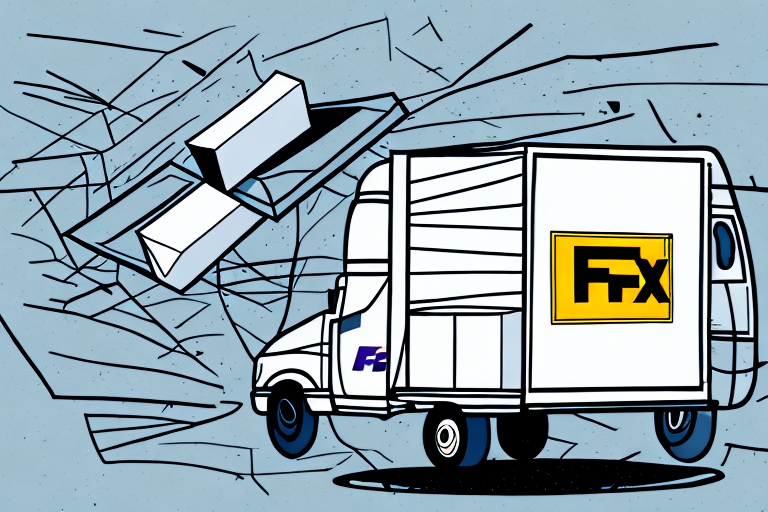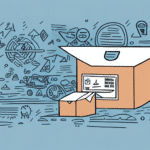How to Identify Damaged FedEx Packages
Ensuring that your FedEx package arrives in perfect condition is crucial for both senders and recipients. Identifying damage promptly can help in filing timely claims and preventing further inconvenience.
Signs of Damage Upon Delivery
Upon receiving a FedEx package, carefully inspect the exterior for any visible signs of damage. Look for:
- Dents and Dings: Indentations or dents on the box.
- Tears and Punctures: Cuts or holes in the packaging material.
- Water Damage: Discoloration or warping caused by moisture.
- Loose Seals: Open or broken tape seals indicating possible tampering.
If any of these signs are present, refrain from signing for the package until a thorough inspection is completed.
Inspecting Internal Package Contents
Sometimes, damage may not be immediately visible from the outside. It's essential to open the package carefully and check the contents for:
- Broken Items: Check fragile items for cracks or breaks.
- Missing Components: Ensure all parts and accessories are present.
- Functionality Issues: Test electronic or mechanical items to confirm they work properly.
Document any internal damages with clear photographs as evidence for claims.
Reporting Damaged Packages to FedEx
Timely reporting of damaged packages is essential to secure compensation and help FedEx enhance its delivery services.
Methods to Report Damage
You can report damaged packages to FedEx through the following methods:
- Online Claim: Visit the FedEx Customer Support page to file a claim online.
- Phone Support: Contact FedEx customer service at 1-800-GoFedEx.
- In-Person: Visit a local FedEx store and speak with a representative.
Benefits of Reporting Package Damage
Reporting damage not only helps you receive compensation but also assists FedEx in:
- Improving Service Quality: Identifying and addressing recurring issues.
- Preventing Future Damage: Implementing better handling practices.
- Enhancing Customer Satisfaction: Ensuring reliable delivery services.
Common Reasons for FedEx Delivery Exceptions
Understanding the common causes of delivery exceptions can help in mitigating risks associated with shipping packages.
Mishandling by Shipping Carrier
Packages can be damaged due to improper handling during sorting, loading, or transportation. Forklifts dropping packages or parcels being stacked excessively are common mishandling issues.
Poor Packaging by Sender
Inadequate packaging materials or techniques can lead to increased vulnerability during transit. Using weak boxes or insufficient padding can result in item damage.
Environmental Factors
Exposure to extreme temperatures, humidity, or rough handling in adverse weather conditions can compromise the integrity of packages.
Incorrect Labeling
Mislabeling can cause packages to be routed incorrectly or delayed, increasing the chances of damage. Ensuring accurate and legible labels is essential.
Customs Clearance Delays
International shipments may face delays due to incomplete documentation or inspections by customs officials, potentially leading to damage from prolonged handling.
Filing a FedEx Claim for Damaged Packages
If your FedEx package arrives damaged, filing a claim promptly is vital to receive compensation.
Steps to File a Claim
- Document the Damage: Take clear photographs of the damaged package and its contents.
- Gather Necessary Information: Include the tracking number, shipment date, and details of the contents.
- Submit the Claim: File the claim online through the FedEx website or by contacting customer service.
- Follow Up: Monitor the status of your claim and provide any additional information if requested.
Restrictions and Limitations
Be aware of the following when filing a claim:
- FedEx may not cover damages resulting from improper packaging.
- There are limits on the compensation amount, typically up to $100 for standard shipments.
- Some items, such as perishables or high-value electronics, may have specific limitations.
Timelines for Filing
Timeliness is crucial when filing claims:
- Damaged Packages: Claims must be filed within 60 days of the shipment date.
- Lost Packages: Claims must be filed within 9 months of the shipment date.
Preventing Package Damage During Shipping
Proactive measures can significantly reduce the risk of package damage during FedEx shipping.
Investing in High-Quality Packaging Materials
Use sturdy boxes, bubble wrap, packing peanuts, and strong tape to ensure your items are well-protected.
Proper Packaging Techniques
Follow these best practices:
- Choose the right size box to prevent excessive movement.
- Distribute weight evenly to avoid crushing.
- Use double-boxing for particularly fragile items.
Following FedEx Packaging Guidelines
Adhering to FedEx’s packaging requirements ensures that your package is prepared correctly for transit.
Understanding FedEx’s Liability and Insurance Options
Knowing FedEx’s liability policies and available insurance options can provide additional security for your shipments.
FedEx’s Liability Policy
FedEx is responsible for handling packages with reasonable care. However, their liability is generally limited to the declared value of the shipment, up to $100 for standard services. For higher-value items, consider purchasing additional insurance.
Shipping Insurance Benefits
Shipping insurance offers extended coverage, protecting against loss, theft, and damage beyond standard liability limits. This provides peace of mind, especially for valuable or fragile items.
Learn more about FedEx Shipping Insurance.
Dealing with Lost or Stolen Packages
In unfortunate cases, packages may be lost or stolen during transit. Here's how to handle such situations:
Steps to Take for Lost or Stolen Packages
- Verify Tracking Information: Check the tracking status to confirm the package is indeed lost.
- Contact FedEx: Report the issue through FedEx customer service or online support.
- Provide Detailed Information: Share the tracking number, shipment details, and any relevant documentation.
- File a Claim: Submit a claim for lost or stolen items as per FedEx guidelines.
Differences Between Claims and Refunds
Understanding the distinction between claims and refunds is essential:
- Claim: A request for compensation due to damage, loss, or theft of package contents.
- Refund: A reimbursement for the shipping costs paid, applicable in cases where the service was not rendered as promised.
Depending on the situation, you may be eligible for both a claim and a refund.
Additional Tips for a Smooth Shipping Experience
Enhancing your shipping practices can lead to fewer issues and a more reliable delivery experience.
Properly Securing Your Package
Ensure that your package is sealed securely using strong tape. Reinforce corners and edges to prevent structural damage during handling.
Clear and Accurate Labeling
Double-check all shipping labels for accuracy. Include clear addresses and contact information to avoid misrouting.
Utilizing Tracking Services
Use FedEx’s tracking services to monitor your package’s journey in real-time. This helps in quickly identifying and addressing any potential issues.
Choosing the Right FedEx Service
Select the appropriate FedEx shipping service based on the urgency and nature of your shipment. Options like FedEx Express offer faster delivery times with enhanced handling, suitable for valuable or time-sensitive items.
Conclusion
Understanding and proactively addressing FedEx delivery exceptions can significantly reduce the risk of damaged, lost, or stolen packages. By following best practices in packaging, accurately reporting issues, and knowing your rights regarding claims and refunds, you can ensure a smoother shipping experience. Staying informed and prepared empowers you to handle any shipping challenges effectively, ensuring that your packages arrive safely and on time.






















